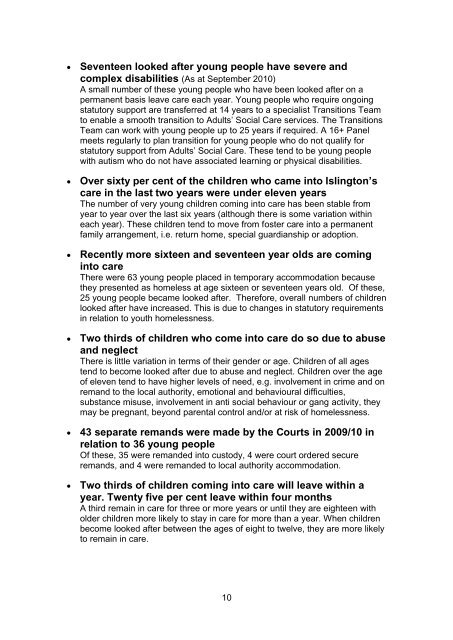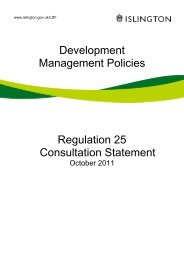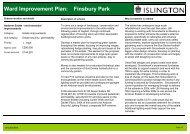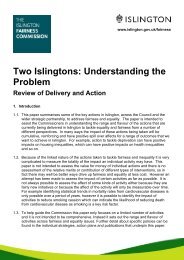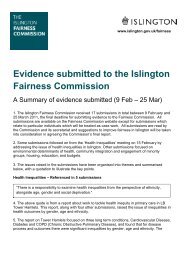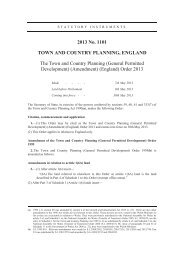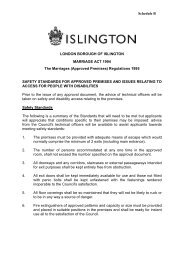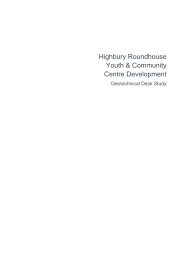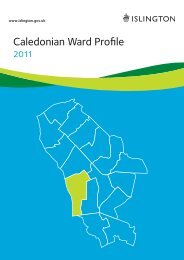The Islington Plan for Looked After Children and ... - Islington Council
The Islington Plan for Looked After Children and ... - Islington Council
The Islington Plan for Looked After Children and ... - Islington Council
Create successful ePaper yourself
Turn your PDF publications into a flip-book with our unique Google optimized e-Paper software.
Seventeen looked after young people have severe <strong>and</strong><br />
complex disabilities (As at September 2010)<br />
A small number of these young people who have been looked after on a<br />
permanent basis leave care each year. Young people who require ongoing<br />
statutory support are transferred at 14 years to a specialist Transitions Team<br />
to enable a smooth transition to Adults’ Social Care services. <strong>The</strong> Transitions<br />
Team can work with young people up to 25 years if required. A 16+ Panel<br />
meets regularly to plan transition <strong>for</strong> young people who do not qualify <strong>for</strong><br />
statutory support from Adults’ Social Care. <strong>The</strong>se tend to be young people<br />
with autism who do not have associated learning or physical disabilities.<br />
Over sixty per cent of the children who came into <strong>Islington</strong>’s<br />
care in the last two years were under eleven years<br />
<strong>The</strong> number of very young children coming into care has been stable from<br />
year to year over the last six years (although there is some variation within<br />
each year). <strong>The</strong>se children tend to move from foster care into a permanent<br />
family arrangement, i.e. return home, special guardianship or adoption.<br />
Recently more sixteen <strong>and</strong> seventeen year olds are coming<br />
into care<br />
<strong>The</strong>re were 63 young people placed in temporary accommodation because<br />
they presented as homeless at age sixteen or seventeen years old. Of these,<br />
25 young people became looked after. <strong>The</strong>re<strong>for</strong>e, overall numbers of children<br />
looked after have increased. This is due to changes in statutory requirements<br />
in relation to youth homelessness.<br />
Two thirds of children who come into care do so due to abuse<br />
<strong>and</strong> neglect<br />
<strong>The</strong>re is little variation in terms of their gender or age. <strong>Children</strong> of all ages<br />
tend to become looked after due to abuse <strong>and</strong> neglect. <strong>Children</strong> over the age<br />
of eleven tend to have higher levels of need, e.g. involvement in crime <strong>and</strong> on<br />
rem<strong>and</strong> to the local authority, emotional <strong>and</strong> behavioural difficulties,<br />
substance misuse, involvement in anti social behaviour or gang activity, they<br />
may be pregnant, beyond parental control <strong>and</strong>/or at risk of homelessness.<br />
43 separate rem<strong>and</strong>s were made by the Courts in 2009/10 in<br />
relation to 36 young people<br />
Of these, 35 were rem<strong>and</strong>ed into custody, 4 were court ordered secure<br />
rem<strong>and</strong>s, <strong>and</strong> 4 were rem<strong>and</strong>ed to local authority accommodation.<br />
Two thirds of children coming into care will leave within a<br />
year. Twenty five per cent leave within four months<br />
A third remain in care <strong>for</strong> three or more years or until they are eighteen with<br />
older children more likely to stay in care <strong>for</strong> more than a year. When children<br />
become looked after between the ages of eight to twelve, they are more likely<br />
to remain in care.<br />
10


